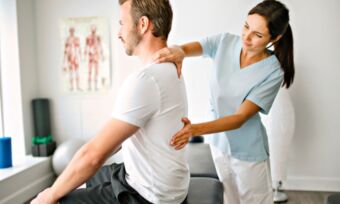Do I need to go the hospital emergency department? Alternative options to consider
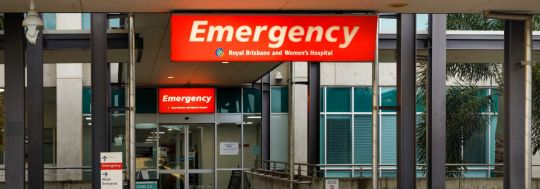
It can be tough to know what to do if you or someone you love is struck down suddenly with a new or worrying medical symptom. Should you wait it out at home and go to your local doctor, or head straight for the hospital emergency department? What about if you have COVID-19 symptoms? Pharmacist Anna Barwick explains.
Every year millions of Australians make their way to hospital emergency departments (ED), but in many cases, there are suitable alternative options for care that could save you time and help to reduce pressure on the ED.
*The following article provides general advice only. Always seek the guidance of your doctor or other qualified health professional with any questions you may have regarding your health or a medical condition. For any potentially life-threatening conditions, or if you are at risk of causing harm to yourself or others, seek immediate medical attention by calling emergency services on triple zero (000). There are also suicide and crisis support services you can contact in Australia if you are feeling distressed.
How many Australians are visiting emergency departments?
The latest Australian Institute of Health and Welfare (AIHW) figures show there were 8.4 million emergency department (ED) visits in Australia during 2018–19, with children under four and people over 65 making up the biggest numbers. Breaking those figures down, this equates to 23,000 visits a day, which is an almost 5% increase on the year before.
Waiting times have been steadily increasing with the rising number of visits in recent years. This issue is heightened outside big cities, with residents from remote areas twice as likely to present to an ED with a non-urgent issue, potentially due to a lack of wider health services in these communities.
→Related article: Wait Times in Emergency Departments
Figures from another AIHW report also show one in three ED visits in 2018-19 were for non-urgent care and could have been managed elsewhere.
So, how do you know if your illness or injury is urgent or non-urgent, and where can you seek treatment or advice for non-urgent medical care?
Is it a medical emergency? Understanding your symptoms
Getting medical help right away for a medical emergency can save a person’s life. So, what are the warning signs of a medical emergency?
According to advice from the Ambulance Service of NSW and HealthDirect, a government-funded service staffed by trained nurses, patients should call triple zero (000) immediately and ask for an ambulance or head to their closest ED if they are experiencing any of the following symptoms:
- Central or crushing chest pain or tightness that lasts more than 10 minutes
- An onset of weakness, numbness or paralysis of the face, arm or leg
- Difficulty breathing or turning blue
- Severe bleeding or inability to control bleeding with pressure
- Severe burns
- Poisoning
- Constant, severe or worsening pain in the body (especially in the head or chest)
- Sudden inability to move or speak, or sudden facial drooping
- Any periods of unconsciousness or a seizure (fit)
- The effects of a severe accident
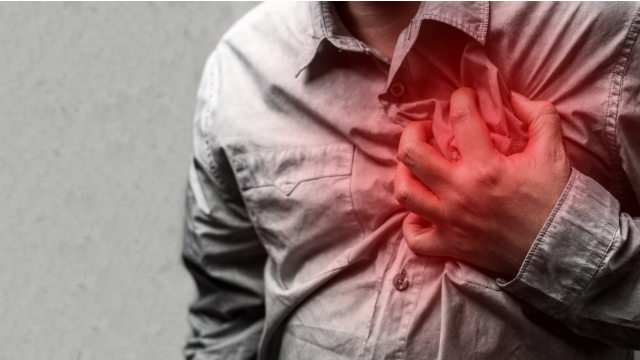
- Source: thebigland (Shutterstock)
Senior Staff Specialist in Emergency Medicine at Liverpool Hospital in New South Wales, Paul Middleton, also advised parents on the HCF website to take their children to the ED if they are:
- short of breath
- becoming progressively lethargic or drowsy
- not interacting
- not drinking or peeing, particularly in small children
- fitting or have an ongoing fever (a fever is anything above 38 degrees Celsius)
If you are not experiencing the above symptoms but are unsure how serious your illness or injury is, you can use HealthDirect’s online Symptom Checker or call their 24-hour telephone helpline (1800 022 222) for advice from a registered nurse about whether a visit to the ED is necessary.
What is the triage process used in emergency departments in Australia?
If you do go to an ED, you will undergo a triage process where staff assign a number between 1‒5, regarding the degree of urgency of a patient’s presentation, with 1 requiring immediate attention. This is critical for categorising patients into resuscitation, emergency, urgent, semi-urgent or non-urgent so the people who need immediate attention will be attended to first.
The AIHW refers to the following five triage categories:
Category 1: Resuscitation – to be seen immediately (within seconds)
Category 2: Emergency – to be seen within 10 minutes
Category 3: Urgent – to be seen within 30 minutes
Category 4: Semi-urgent – to be seen within 60 minutes
Category 5: Non-urgent – to be seen within 120 minutes
Because of this system, if your case is not urgent, you could spend more time in the waiting room, particularly if other cased that are deemed more urgent cases present while you are waiting.
When should you seek emergency care for COVID-19 related symptoms?
If you have cold or flu-like symptoms, such as a cough, fever, sore throat, shortness of breath or runny nose, the Department of Health recommends you get tested for coronavirus (COVID-19) as soon as possible. If you want to talk to someone about your symptoms, you can contact your doctor or ring the Coronavirus Health Information Line that operates 24 hours a day, seven days a week on 1800 020 080.
→Related article: Coronavirus, common cold or flu? The key difference explained
If you have serious COVID-19 related symptoms such as shallow, rapid breathing, confusion, drowsiness, you are turning blue or pale, or have unusually cold skin, then Healthdirect recommends you call 000 for urgent assistance or visit your nearest ED.
The Department of Health said patients should call ahead to advise emergency staff at the ED that they suspect they may have coronavirus. Staff may then advise patients to take precautions when they arrive for treatment, such as wearing a mask, sanitising their hands when arriving, staying at least 1.5 metres away from other people and entering through a separate area.
What alternatives are there to going to the emergency department?
If you do not believe that your health problem is an emergency, then you may choose to consider an alternative to visiting an ED.
Some other options you could consider include:
-
Visiting your doctor or after-hours walk-in clinic
Some medical conditions can be assessed, diagnosed and managed by a General Practitioner (GP). Most capital cities and regional towns have after-hours GP services or walk-in clinics available if you are unable to see your own doctor for urgent treatment. There are also some specialist practitioners, including dentists and optometrists, that may have after-hours clinics available for urgent dental or eye care. If your doctor or specialist practitioner believes your condition needs emergency care, they can refer you to an ED if necessary.
-
Making an appointment with an at-home doctor
There are now some national and state-based home doctor services available to patients requiring urgent care when their GP is closed. One such network is 13SICK, National Home Doctor. These doctors can treat patients with acute, episodic conditions (e.g., gastroenteritis or stomach flu, urinary tract infections and migraines) on weeknights, weekends and public holidays at their home. Some home doctors can bulk bill patients with a Medicare card, and can send a medical report to the patient’s GP the next day. They will also refer patients to an ED if emergency treatment is required.
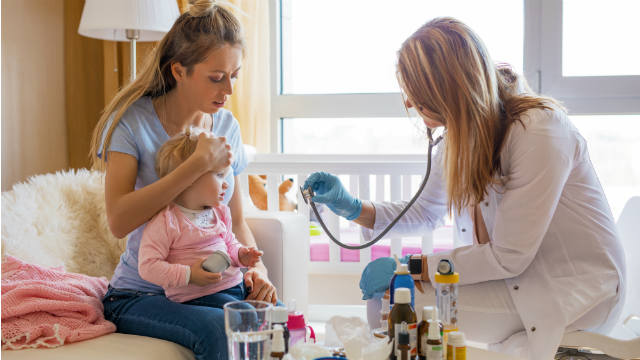
- Source: Kaspars Grinvalds (Shutterstock)
-
Going to a pharmacy
Community pharmacists (also called chemists), including late-night pharmacies, can help with accessibility to health care as there is generally no need to make an appointment to see them. These health professionals may be able to help diagnose or triage symptoms and refer patients to an appropriate medical care professional. They can also supply and provide advice on medications, wound care, vaccinations, self-care and lifestyle assessments (e.g., BMI checks), medical certificates, advice about children and babies (e.g., treatment of nappy rash, eczema, teething) and sleep apnoea support, according to Healthdirect. You can search for your local pharmacy at findapharmacy.com.au or search Healthdirect’s Service Finder to find pharmacies with extended opening hours near you.
-
Calling a telephone helpline
There are telephone helplines available in Australia for non-urgent medical advice or mental health crisis support, including:
Health lines (sorted from a-z):
- 1300 MEDICINE: 1300 633 424 (for information on prescriptions and over-the-counter medicines)
- 13 HEALTH: (QLD residents only): 13 43 25 84
- Coronavirus Helpline: 1800 020 080
- Healthdirect: 1800 022 222 (for free medical advice and reassurance 24-hours a day, seven days a week)
- NURSE-ON-CALL: (Victorian residents only): 1300 60 60 24
- Pregnancy, Birth and Baby: 1800 882 436 (for general advice and support about pregnancy, childbirth and parenting up to five years)
Mental health lines (sorted from a-z):
National:
- Beyond Blue: 1300 22 4636 (24-hour support and counselling service)
- Blue Knot Foundation Helpline: 1300 657 380 (for adult survivors of trauma and abuse)
- Butterfly Foundation: 1800 33 4673 (for those with eating disorders and body image issues)
- eheadspace: 1800 650 890 (for young people aged 12 – 25 years)
- Kids Helpline: 1800 551 800 (for young people 5 – 25 years)
- Lifeline: 13 11 14 (24-hour crisis support)
- MensLine Australia: 1300 78 99 78 (for men of any age)
- MindSpot: 1800 61 44 34 (for people with stress, worry, anxiety, low mood or depression)
- Open Arms: 1800 011 046 (for veteran and families counselling)
- PANDA: 1300 726 306 (for those suffering with perinatal anxiety and depression)
- QLife: 1800 184 527 (to support lesbian, gay, bisexual, transgender and intersex people of all ages)
- SANE Australia: 1800 18 7263 (support and training for those with a mental illness)
- Suicide Call Back Service: 1300 659 467 (24-hour support if you or someone you know is feeling suicidal)
State based:
- ACT: 1800 629 354 – Mental Health Triage Service
- NSW: 1800 011 511 – Mental Health Line
- NT: 1800 682 288 – Northern Territory Mental Health Line
- QLD: 1300 642 255 – 1300 MH CALL
- SA: 13 14 65 – Mental Health Assessment and Crisis Intervention Service
- TAS: 1800 332 388 – Mental Health Services Helpline
- VIC: 1300 651 251 – Suicide Help Line
- WA: 1800 676 822 – Mental Health Emergency Response Line (separate number for rural residents. More information available on Healthy WA website)
The above phone lines are generally free or provided at the cost of a local call (some charges may apply to mobile users).
What is Telehealth for care?
Telehealth is another alternative to presenting at ED –allowing patients to seek expert medical help from a GP or specialist practitioner (e.g. physiotherapist or psychologist) remotely via their computer or telephone, such as through the Zoom, Skype or FaceTime platforms.
Telehealth can be used to provide diagnosis, treatment, and preventive aspects of some healthcare services, according to the Department of Health. This may include having an appointment with your GP and requesting a prescription over the phone, having an online counselling session with your psychologist, or a video chat with your physiotherapist. You can contact your healthcare provider, such as your GP, to see if they offer telehealth services.
There has been a notable increase in offerings of telehealth over the last few years, with many organisations adopting the technology in recent months in response to the COVID-19 lockdowns across the country.
Before the COVID-19 pandemic, bulk-billed (and Medicare-subsidised) telehealth services were generally only available to a select group of Australians, including those in remote communities or high-risk patients. However, since 30 March, the government has now made some temporary Medicare-subsidised telehealth services available to all Australians (with a Medicare card) seeking help over the phone or via video call. Patients can ask their GP or other health care provider (e.g. physiotherapist) whether they can provide Medicare-subsidised telehealth services.
Many health funds have also expanded their coverage of telehealth services to their members during the pandemic (e.g. covering some of the costs of telehealth consultations such as for physiotherapy or psychology). Check with your health fund to see if telehealth is covered and if there are any restrictions that apply.
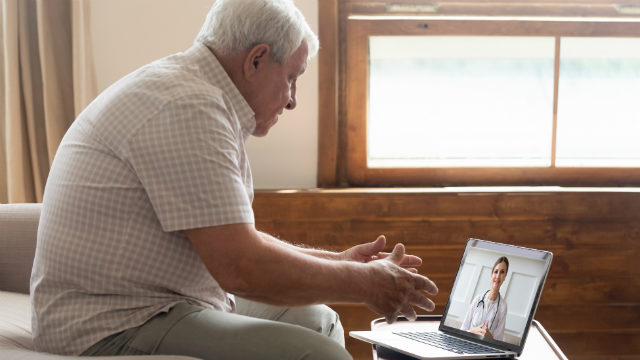
- Source: fizkes (Shutterstock)
Will health insurance or Medicare cover emergency medical costs?
If you visit a public emergency department in Australia, and you hold a Medicare card, you are unlikely to face any out-of-pocket expenses for your care. Medicare generally covers all of the costs of public hospital services, including emergency treatment by doctors, specialists and nurses, according to Human Services.
If you visit a private hospital emergency department, you will usually be charged with a flat fee for treatment, unless you have an eligible veteran’s healthcare card or you are a worker’s compensation patient. This fee is not usually claimable under Medicare or private health insurance, meaning you will need to pay for this expense out of your own pocket.
In Australia the costs of ambulance services to a hospital emergency department is not covered by Medicare. This means that in some states and territories, except Queensland and Tasmania (where ambulance services are free for residents), you will be charged for using these services. There are, however, health insurance options available for ambulance cover, which could help you claim back some of the expenses of these services should you need to use them. Some health insurers may offer ambulance cover in the form of a standalone ambulance insurance policy, or they may include it under their hospital and extras products.
For more information, Canstar has provided a breakdown of ambulance insurance cover options and cost considerations in New South Wales, Victoria and for visitors to Queensland.
How can I plan for an emergency?
According to the Brisbane Primary Health Network (PHN) Emergency Choices website, a government-backed non-for-profit medical services organisation, it is a good idea for patients to plan ahead for medical events they may face. This may include knowing where their local after-hours GP or specialist is located, having an up-to-date Medicare card, knowing where and how to get to the nearest ED, and having contact details of a babysitter, should they need to leave their child to seek emergency care.
If you or your loved one are experiencing a new or alarming symptom, it’s important to reach out for help, whether that is online, over the phone or in person for appropriate support to assess your medical condition. If there is any chance your or your loved one’s condition is urgent, then don’t hesitate to call triple zero (000) or go to the ED at your local hospital.
 Psychiatric services
Psychiatric services
 Rehabilitation
Rehabilitation
 General dental
General dental
 Physiotherapy
Physiotherapy
 Psychiatric services
Psychiatric services
 Rehabilitation
Rehabilitation
 General dental
General dental
 Physiotherapy
Physiotherapy
 Psychiatric services
Psychiatric services
 Rehabilitation
Rehabilitation
 General dental
General dental
 Physiotherapy
Physiotherapy
 Psychiatric services
Psychiatric services
 Rehabilitation
Rehabilitation
 General dental
General dental
 Physiotherapy
Physiotherapy
 Psychiatric services
Psychiatric services
 Rehabilitation
Rehabilitation
 General dental
General dental
 Physiotherapy
Physiotherapy
 Psychiatric services
Psychiatric services
 Rehabilitation
Rehabilitation
 General dental
General dental
 Physiotherapy
Physiotherapy
 Psychiatric services
Psychiatric services
 Rehabilitation
Rehabilitation
 General dental
General dental
 Physiotherapy
Physiotherapy
Canstar may earn a fee for referrals from its website tables, and from Sponsorship or Promotion of certain products. Fees payable by product providers for referrals and Sponsorship or Promotion may vary between providers, website position, and revenue model. Sponsorship or Promotion fees may be higher than referral fees. Sponsored or Promoted products are clearly disclosed as such on website pages. They may appear in a number of areas of the website such as in comparison tables, on hub pages and in articles. Sponsored or Promoted products may be displayed in a fixed position in a table, regardless of the product’s rating, price or other attributes. The table position of a Sponsored or Promoted product does not indicate any ranking or rating by Canstar. For more information please see How We Get Paid.
About Anna Barwick
 Anna Barwick is a pharmacist and lecturer at the University of New England. She is also the creator of a new telehealth platform, PharmOnline, which allows users to get live time assistance with a remote pharmacist offering qualified health advice. Anna has a Bachelor of Pharmacy (Hons) at Charles Stuart University, a Doctor of Philosophy – PhD, Pharmacy Practice at The University of Queensland and a Masters of Clinical Pharmacy also at The University of Queensland.
Anna Barwick is a pharmacist and lecturer at the University of New England. She is also the creator of a new telehealth platform, PharmOnline, which allows users to get live time assistance with a remote pharmacist offering qualified health advice. Anna has a Bachelor of Pharmacy (Hons) at Charles Stuart University, a Doctor of Philosophy – PhD, Pharmacy Practice at The University of Queensland and a Masters of Clinical Pharmacy also at The University of Queensland.
Follow her on LinkedIn.
Main image source: Zorro Stock Images (Shutterstock)
As with all our content, Canstar’s Coronavirus coverage will always be free for our readers.
Talk to a health insurance specialist to find the policy that suits your needs
This article was reviewed by our Sub Editor Jacqueline Belesky and Finance and Lifestyle Editor (former) Shay Waraker before it was updated, as part of our fact-checking process.
- How many Australians are visiting emergency departments?
- Is it a medical emergency? Understanding your symptoms
- What is the triage process used in emergency departments in Australia?
- When should you seek emergency care for COVID-19 related symptoms?
- What alternatives are there to going to the emergency department?
- What is Telehealth for care?
- Will health insurance or Medicare cover emergency medical costs?
- How can I plan for an emergency?
 Psychiatric services
Psychiatric services
 Rehabilitation
Rehabilitation
 General dental
General dental
 Physiotherapy
Physiotherapy
Try our Health Insurance comparison tool to instantly compare Canstar expert rated options.
Talk to a health insurance specialist to find the policy that suits your needs




